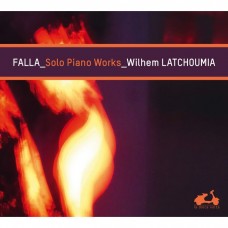您的購物車沒有添加專輯!
搜尋
法雅:鋼琴獨奏作品 Falla / Solo Piano Works
專輯編號: LDV27
專輯類型: 單CD
發行年份: 2016
國際條碼: 3770001901473
音樂家:
庫存狀態: 有庫存
|
Manuel de Falla's first instrument was the piano. The four landscapes in sound of the 'Cuatro piezas españolas' pay tribute to Isaac Albeniz. Starting out from the black-and-white keyboard, he imagined the colours of his orchestra - vivid, dry, crackling like an immense ensemble of timbral percussion. The ascetic precision of de Falla's musical thought is embodied in the 'Fantasía bætica', ruled by a murderous sun, but his creative imagination also reconstituted the neo-Baroque tone of 'El sombrero de tres picos' in instrumental writing that harks back to Scarlatti. Yet this pianistic world is above all that that of Gypsy Andalusia. When the composer decided to make a digest for piano of the original version for small orchestra of 'El amor brujo' that did not limit itself to the brio of the Ritual Fire Dance, the result was a genuinely theatrical piece, sublimating the whole culture of cante jondo, transporting the listener into the magic circle of flamenco, piano-guitar, piano-voice. Wilhem Latchoumia's brilliant and profound playing illuminates every aspect of this immemorial and multiple Spain. |
|
1-4 Cuatro piezas españolas: I. Aragonesa II. Cubana III. Montanesa IV. Andaluza 5 Homenaje "Le Tombeau de Claude Debussy" 6-8 El Sombrero de tres picos: I. Danza de la Molinera II. Danza de los Vecinos III. Danza del Molinero 9 Canto de los remeros del Volga 10- 15 El Amor brujo: I. Pantomina II. Escena III. Cancion del fuego fatuo IV. Danza del terror V. Romance del pescador (El circulo magico) VI. Danza ritual del fuego 16 Pour le tombeau de Paul Dukas 17 Fantasia Baetica 18 Serenata andaluza 19 La Vida breve |
編號 |
曲目 |
長度 |
作詞 |
作曲 |
演奏 |
樂團 |
演唱 |
指揮 |
試聽 |
|---|


